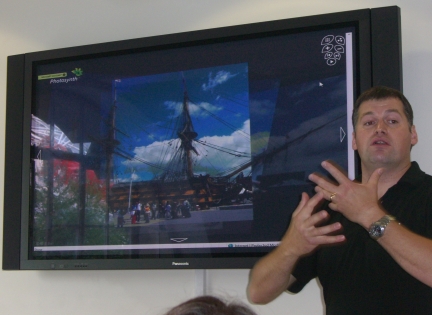Microsoft officially launches Photosynth

Microsoft has officially launched Photosynth, software for home and business users looking to turn their pictures into fully developed 3D images.
The software, released on Thursday, was first developed by Microsoft's Live Labs research arm in 2006 and subsequently became available in trial versions. It allows users to display multiple pictures at the same time, so that, if a user takes multiple pictures of a landscape, for example, the software will bring the pictures together into one larger, cohesive image.
When used properly, the software should make it possible for a user to walk around a subject taking multiple pictures and then create a 3D image from those images.
The software, which is free, comes in two parts: a browser plug-in for viewing the 3D images, and an application for creating them. To create an image, a user must first collect pictures, then use the client-side application to collate them into a multiple image, or 'synth'. The synth can then be embedded into blogs, social-networking sites or any other HTML-editable site, in much the same way as a YouTube video can be embedded.
Microsoft's development evangelist for Photosynth in the UK, Paul Foster, said each user would have only 20GB of online storage for their synths "for the time being", but said the company was looking into making more space available. He did not dismiss suggestions that customers might need to pay for such an extension of storage space, and would not speculate on how much that space might cost, saying it was "early days" for the software. Microsoft did say later that it had no speciifc plans to introduce a charge.
Foster also noted that the Photosynth plug-in would only work with Internet Explorer 7, Firefox 2 and Firefox 3. Photosynth uses a Microsoft standard, Jpeg XR, to handle multiple pictures. Foster said Microsoft intended this to become a "public standard".
Photosynth can be downloaded from Microsoft's dedicated website.
